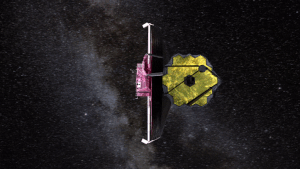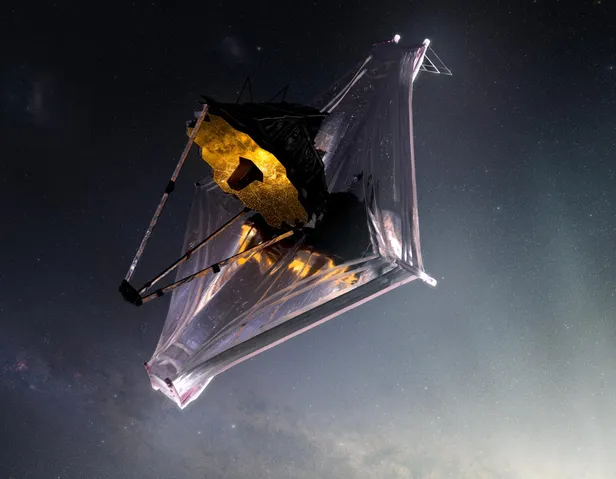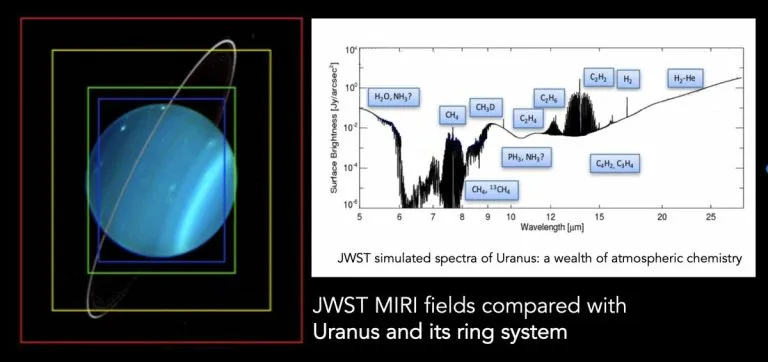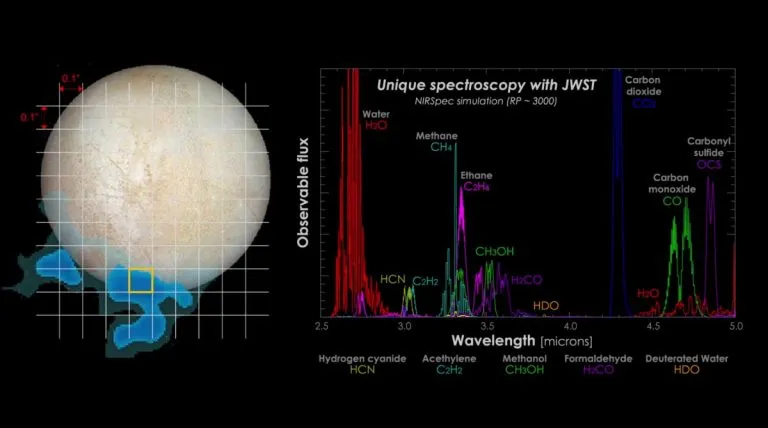As NASA's James Webb Space Telescope (JWST) entered the final stage of debugging its scientific instruments, the JWST team also began the technical operation of the telescope. As the telescope moves through space, it will constantly discover distant stars and galaxies and point at them with incredible accuracy to obtain images and spectra. However, the JWST team also has plans to observe the planets in the solar system and their satellites, asteroids and comets , which move on the background stars of our Milky Way galaxy. The Weber telescope must be able to locate these objects and track them accurately to obtain images and spectra.

Recently, Weber's team completed the first test of tracking a moving object. This test confirmed that Weber can carry out scientific research on moving targets. As the JWST team's commissioning work progresses, they will test other objects moving at different speeds to verify that they can use Weber to study objects moving throughout the solar system.

Recently, Heidi Hammel, an interdisciplinary scientist in charge of solar system observation in Weber's team, detailed her plan to study the earth's nearest "neighbor":
"I'm very excited about Weber's upcoming first year of scientific operation! I'm leading an equally excited team of astronomers who are eager to start downloading data. Weber can detect the faint light of the earliest galaxies, but my team will observe closer to home. They will use Weber to uncover some mysteries in our own solar system."
"One of the questions I'm often asked is why we need a telescope as powerful as Weber to study our nearby solar system. Our planetary scientists use telescopes to supplement our mission (our mission is to fly over or land on celestial bodies) 。 An example of how this aspect of the Hubble telescope is used to find the new vision of Pluto. When we don't have an in-situ flight plan, we also use telescopes - such as distant ice giants Uranus and Neptune, or measure a large number of celestial groups, such as hundreds of asteroids or Kuiper Belt objects (small ice world outside Neptune's orbit, including Pluto), because we can only send missions to a few of these objects. "
"The Weber team has used an asteroid in our solar system to target 'moving targets' (MT) Engineering tests were carried out. The engineering team tested this ability on an asteroid in the main belt: 6481 Tenzing, named after the famous Tibetan Mountaineering Guide Tenzing Norgay, who was one of the first people to climb the top of Mount Everest. Bryan holler of the Space Telescope Science Institute selected about 40 possible asteroids to test MT tracking, but as he told our team: 'since these objects are almost the same in other aspects, there seems to be no problem in choosing a name related to success.' We like such things. "

"My role in Weber is' interdisciplinary scientist ', which means that my project uses all the capabilities of this cutting-edge telescope! We need all these capabilities to really understand Uranus. We need all the capabilities to really understand the solar system (and the universe!)."
"The mysteries of our solar system are far greater than my team has time to solve. Our plan will observe the objects of the entire solar system. We will image giant planets and Saturn rings; explore many Kuiper Belt objects; analyze the atmosphere of Mars; carry out detailed research on Titan; and more!. other teams are planning observations; in the first year, Weber will focus 7% of his time on the objects in our solar system 。”
"An exciting and challenging project we plan to do is to observe the ocean world. The Hubble Space Telescope has evidence that Jupiter's moon Europa has sporadic water rich materials. We plan to take high-resolution images of Europa, study its surface, and look for plume activity and active geological processes. If we find a plume, we will use Weber's spectroscopy to analyze the composition of the plume."

"I have a passion for Uranus and Neptune. In fact, due to the lack of missions to these very distant worlds, I participated in Weber's work decades ago. The Uranus team hopes to integrate the chemistry and dynamics of the upper atmosphere (which can be detected by Weber) It is clearly linked to the deep atmosphere we have studied with other facilities for decades. For the past 30 years, I have been using the largest and best telescope in human history to study these ice giants, and now we will add Weber to this list. "
"We have planned for Weber observation for more than 20 years, and now we have entered the state of speeding. We have launched, deployed and concentrated!" I would like to point out that almost all the solar system data of my team will be immediately provided to the vast planetary scientific community free of charge. I made this choice in order to use Weber for more scientific discoveries in future proposals. "
"I'm very happy to work with the team for such a long time. I especially want to shout to thousands of people who have jointly contributed to this amazing facility for Astrophysics and the planetary world. Thank you! Ad Astra!"